
iPhone 5s: Venus, Moon, Rima Atiadaeus, Mountain Shadows
Posted: 10 November 2013
The observatory was opened Saturday, 9 November 2013, at 1650 MST, 88°F. The sky was clear. Viewed Venus at 1657 MST, 83X and 222X. Venus appeared against a bright blue sky as sunset would not occur until 1726 MST. At 1703 MST, I did this handheld iPhone 5s afocal image of Venus at 364X. The image was cropped from a single frame in a slo-mo video made at the 8" LX200-ACF.
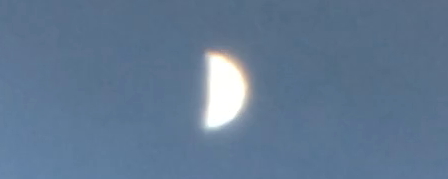
Then viewed Venus, 364X, still against the bright blue sky.
Slewed to the near First Quarter Moon and viewed it at 83X using the 2" 24mm UWA eyepiece. Then switched to a 1.25" 26mm eyepiece with my homemade iPhone afocal adapter attached. Took this afocal photograph, 77X, at 1710 MST (16 minutes before local sunset), using the earbuds volume control as a remote shutter release:
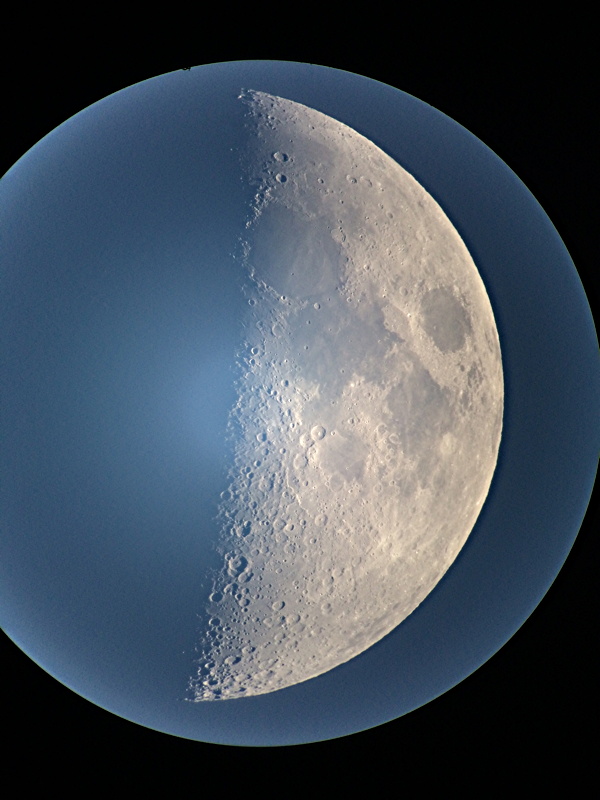
Next, did some lunar terminator observing with the 2" 9mm 100° eyepiece (222X). Since the sky was still bright, the view was low contrast. Sunset occurred at 1726 MST. The lunar rille "Rima Atiadaeus" looked particular nice this evening. Switched to the 26mm eyepiece plus 3X TeleXtender (231X) and viewed the rille. Seeing was not very steady but the view was pretty good at times.
While viewing the moon, I noticed that the Earth's shadow and the "Belt of Venus" was showing nicely in the northeastern sky. I stepped outside of the observatory and took this photo at 1739 MST with the iPhone 5s:
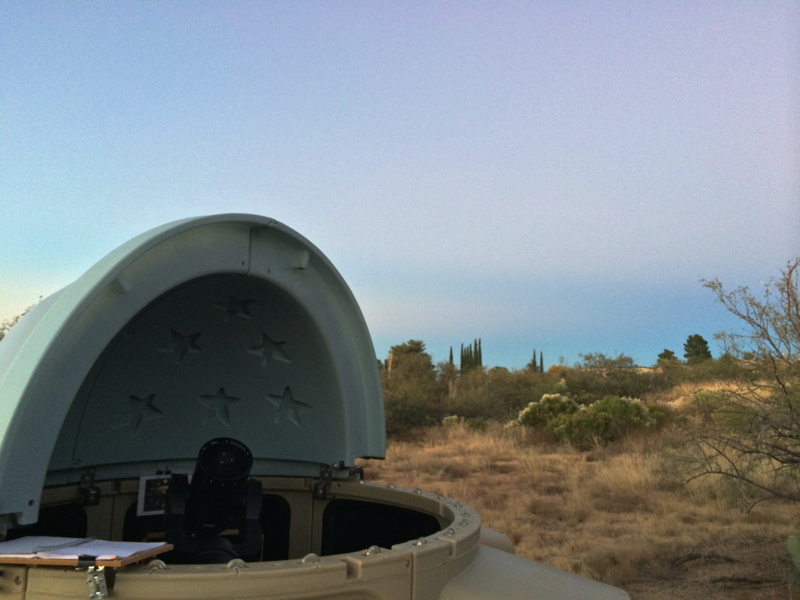
At 1746 MST, did some iPhone 5s slo-mo video recordings, afocal 231X, of Rima Atiadaeus. This is a cropped image from a single video frame, showing the rille running diagonally at the center of the image:
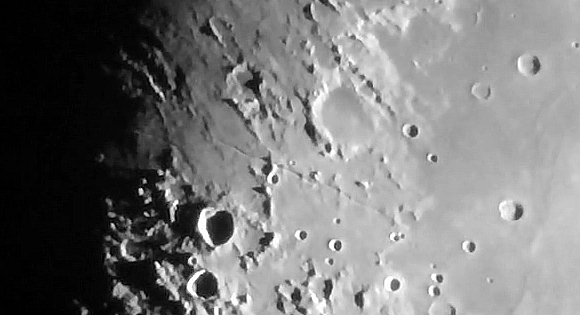
I resumed lunar terminator observing, 231X. Mountain shadows near the crater Eudoxus looked nice. This is a cropped single frame from a slo-mo video, 231X, taken at 1759 MST:
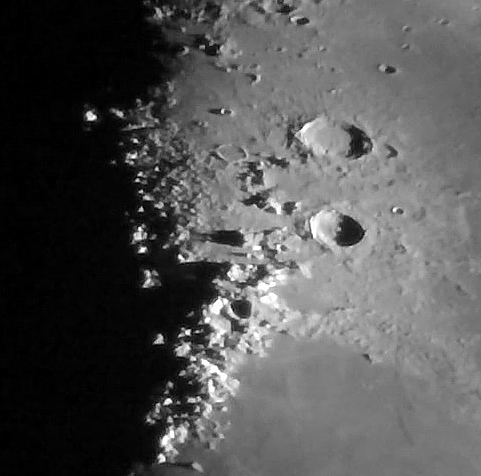
Beginning at 1806 MST, I monitored the mountain shadows for changes as the sun rose on the moon, 364X. I also took a tour around the illuminated lunar limb, 364X. Synced the observatory clock to radio station WWV. By 1832 MST, seeing was worsening. Switched to 222X to monitor the mountain shadows. Also viewed the earthlit portion of the moon; no details were seen. I took a last look at the moon at 1842 MST, 83X, and then began closing up for the night.
The observatory was closed at 1851 MST, 66°F.
I hope to post photos from the "Last A-7D Pilots Reunion" later today. Check my A-7D web page.
My next observatory report may be delayed. Cloudy skies are forecast for some upcoming nights. Plus, I'll be taking a visiting niece to see various sights around Arizona. She hopes to get to spend some time in the observatory. In addition, I'll be working the OPT booth at the Arizona Science and Astronomy Expo, 16-17 November. Stop by and say hi if you'll be at the Expo.
Comments are welcome using Email. Thanks.
(Use of the LiveFyre comments system has been discontinued due to low usage.)
Cassiopeia Observatory Home Page